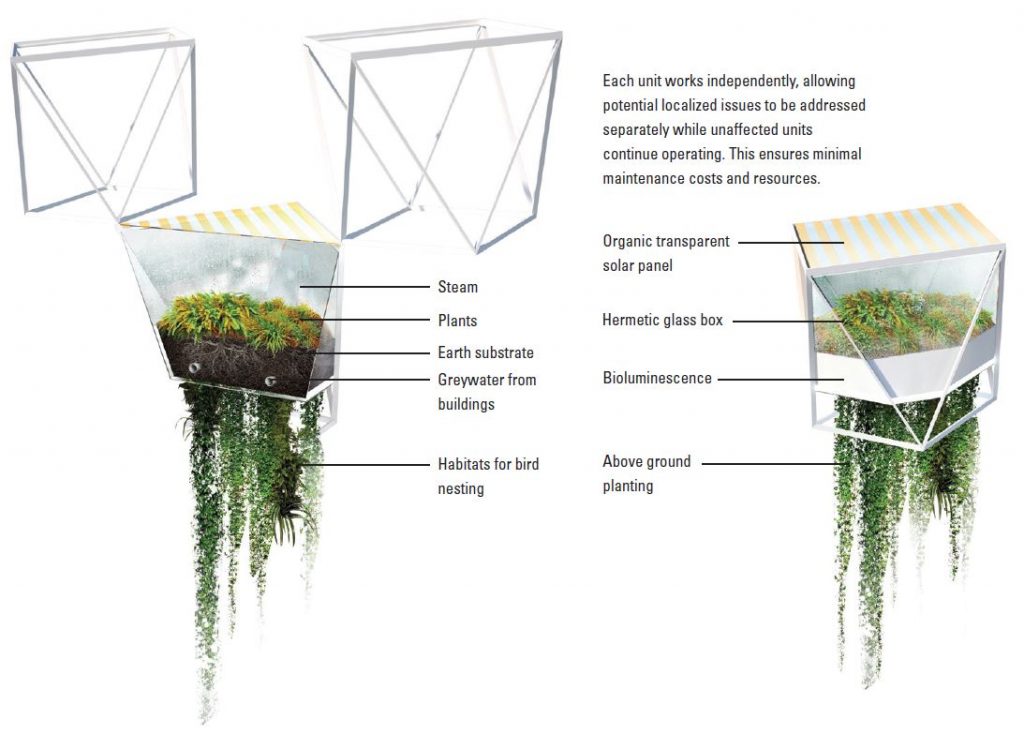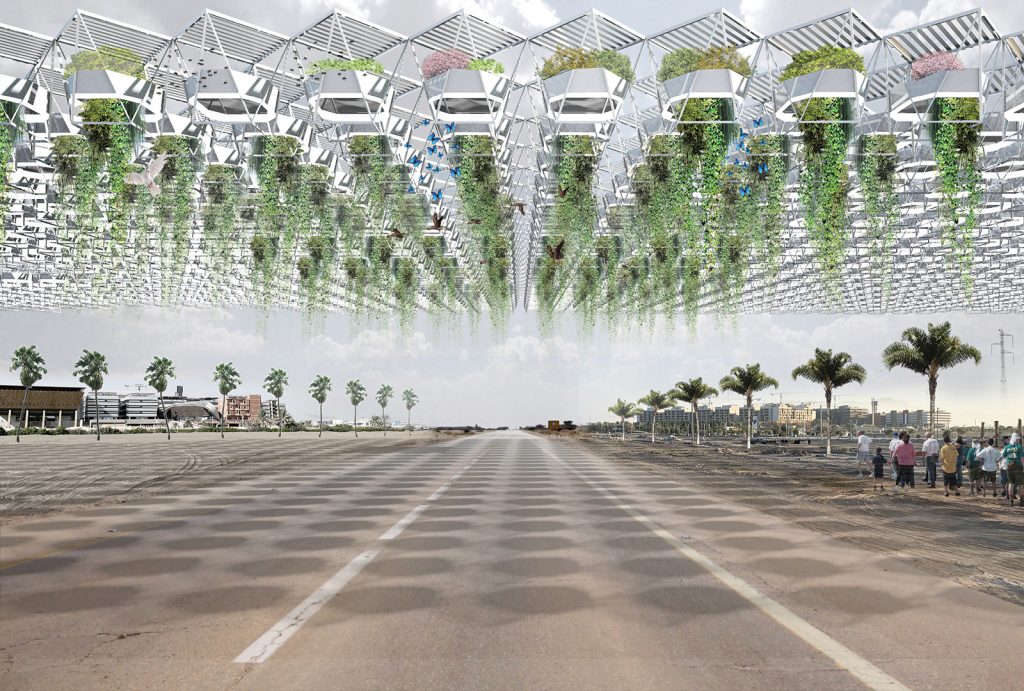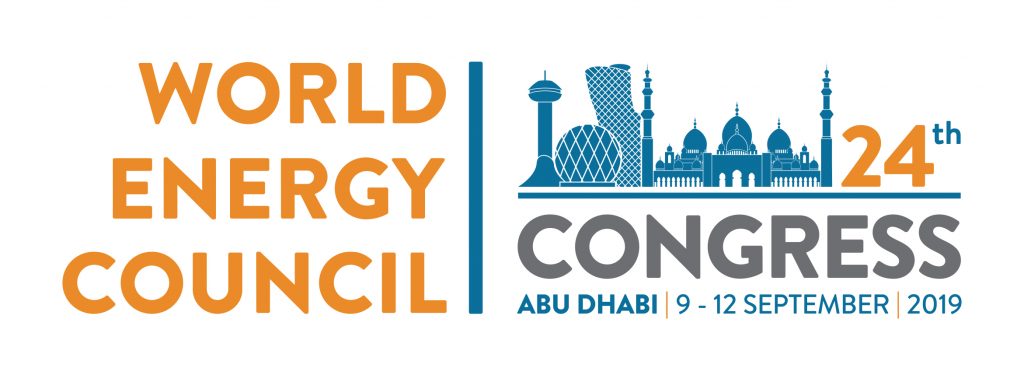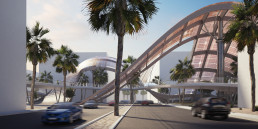The Oasis is an architectural object, a sustainable power source, a lush independent eco-system, and a fully integrated urban landmark for Masdar City. Its primary purpose is to provide sustainable energy and water to local buildings, but it also acts as an urban park, providing shade and temperate space for pedestrians and visitors.

Technology: organic photovoltaic (OPV), microbial electrolysis
Annual Capacity: 1,200 MWh
A submission to the 2019 Land Art Generator design competition for Abu Dhabi
Each of the individual units is inspired by simple and proven concepts assembled into one structure, designed with the timeless and basic materials of steel and glass and incorporating hydroponic and aeroponic aboveground farming techniques that do not require significant irrigation. The result is a futuristic landscape of lush hanging gardens suspended above the ground, interspersed with welcoming habitats for nesting birds. The interplay of light and shadow draw the landscape of a 21st century oasis and blend it into the life of the city.

Technology: organic photovoltaic (OPV), microbial electrolysis
Annual Capacity: 1,200 MWh
A submission to the 2019 Land Art Generator design competition for Abu Dhabi
The power for the system comes from semi-transparent and flexible organic photovoltaic modules. Microbial electrolysis cells use the plant and soil as a medium for generating electric current that is used to split hydrogen from water.

Technology: organic photovoltaic (OPV), microbial electrolysis
Annual Capacity: 1,200 MWh
A submission to the 2019 Land Art Generator design competition for Abu Dhabi
Water harvesting sails capture an average of 55 liters per square meter per day from the humidity of the Abu Dhabi atmosphere, which can be used to augment the potable water of the city. The water used to irrigate the plants within the artwork comes from the function of the terrarium itself. Hermetically sealed glass modules host various species of plants. The sun heats the inside of the modules, and the plants produce water, which forms a steam that is trapped inside the glass. During the night when temperatures drop, this steam rains back within the terrarium and into the soils.

Technology: organic photovoltaic (OPV), microbial electrolysis
Annual Capacity: 1,200 MWh
A submission to the 2019 Land Art Generator design competition for Abu Dhabi
As a final design element, a naturally bioluminescent bacterium feeding on the soil substrate of the terrarium illuminates this biophilic urban microclimate with a soft glow after dark.
LAGI 2019 is sponsored by Masdar and is held in partnership with the 24th World Energy Congress.





